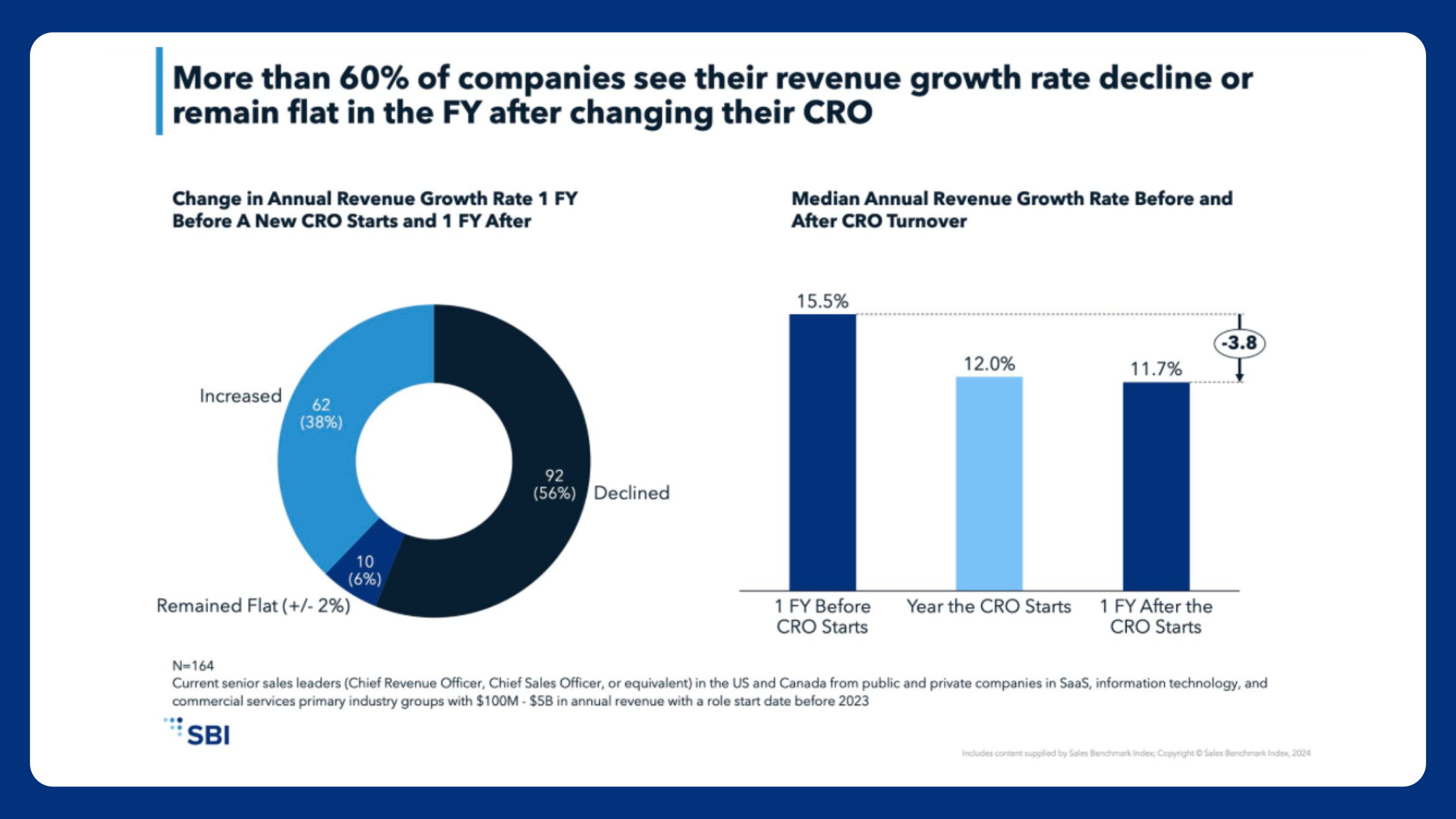SBI Research Featured in Harvard Business Review: The Hidden Costs of CRO Turnover


We’re excited to share the findings of our latest research, which was just published in Harvard Business Review: The Hidden Costs of CRO Turnover. In the article, co-authored with my colleagues Bryan Kurey and Dave Lingebach, we examine the high costs of Chief Revenue Officer (CRO) turnover and its significant impact on company performance. The data is clear: replacing your CRO can often hurt growth more than it helps.
The Cost of CRO Turnover to Growth and Value Creation
Our research, which analyzed over 150 B2B organizations, found that more than half (56%) experienced a decline in their growth rate in the first full year after CRO turnover. This statistic becomes even more troubling when considering that 62% of companies report flat or declining growth following a CRO change. External hires, which are typically seen as a way to inject fresh ideas and energy, actually led to a 7.1% decline in growth rate.
It’s a costly mistake. Too often, companies turn to CRO turnover as a quick fix when growth stalls, but the disruption this causes can grind initiatives to a halt. New CROs bring their own “playbooks” and often make significant changes that don’t align with existing growth strategies.
What Companies Should Do Instead
Rather than looking outside the organization for a solution, our research suggests a more strategic approach:
- Strengthen RevOps: Revenue Operations (RevOps) is the engine that powers effective decision-making. When RevOps is optimized, CROs can leverage better data and insights, making them far more effective in their role.
- Promote from Within: Internal candidates tend to perform better than external hires when stepping into the CRO role. Perhaps counterintuitively, we found that even when internal candidates didn’t have prior CRO experience, they still outperformed external hires. The reason is simple: they understand the business and its unique growth challenges, which allows for greater continuity and less disruption.
- Invest in Leadership Development: Too often, companies fail to develop a robust succession plan. By investing in leadership development and creating clear pathways to the CRO role, organizations can ensure smoother transitions and maintain momentum in their growth initiatives.
Why Turnover Hurts Growth
Through our research, we uncovered several reasons why CRO turnover is so damaging to growth. When a CRO departs, growth plans and key initiatives are often paused or abandoned. It also has a ripple effect on the rest of the commercial leadership team, leading to further turnover. Even when new CROs bring valuable skills, their strategies may not align with the company’s goals, causing even more disruption.
CRO turnover is expensive, and it’s critical for companies to take a hard look at their operating environment before deciding to make a change. Ask yourself: How strong is our RevOps team? Is the data reliable? Do we have a clear succession plan in place?
Conclusion: Think Before You Fire
The bottom line is simple: don’t view CRO turnover as a quick fix. Firing your CRO without addressing the underlying issues can often do more harm than good. If a change is necessary, promoting from within should be your first option. At the end of the day, stability in leadership—combined with strong RevOps—can deliver far greater results than constantly seeking new leadership.
If you’re interested in diving deeper into our findings, you can read the full article in Harvard Business Review here.